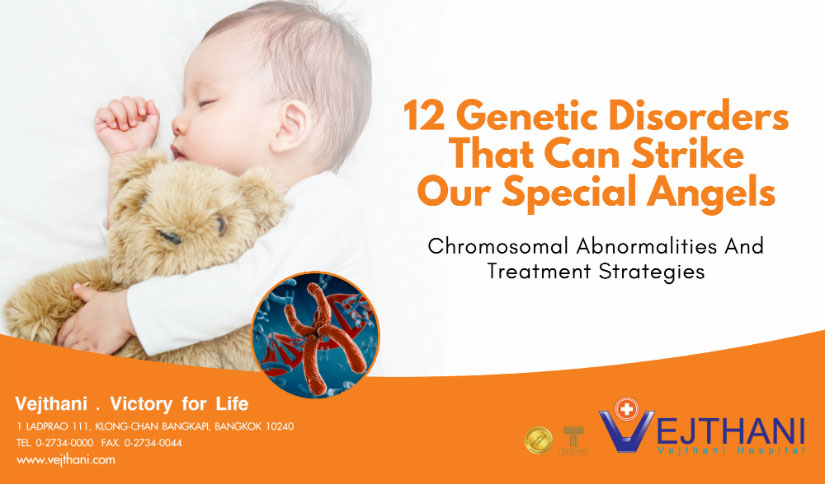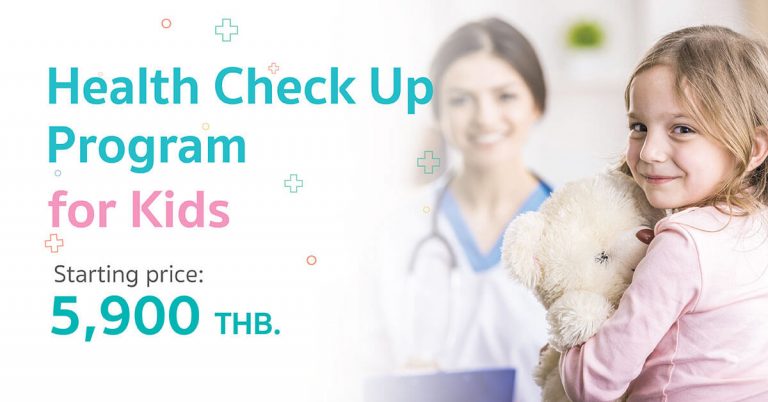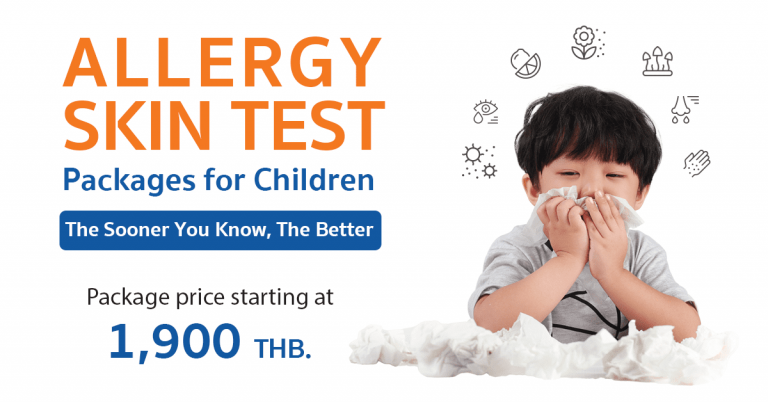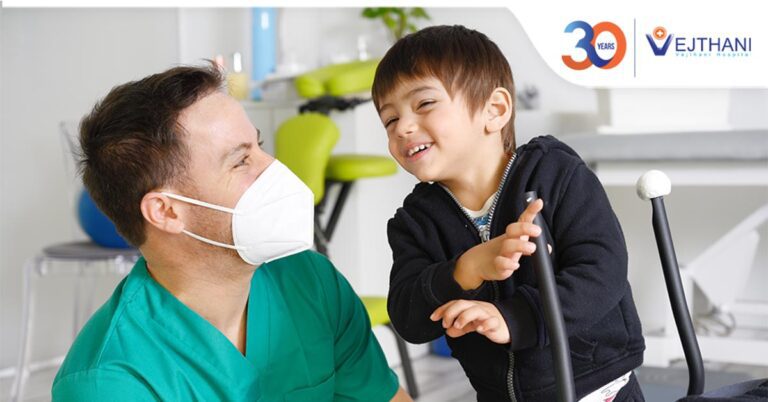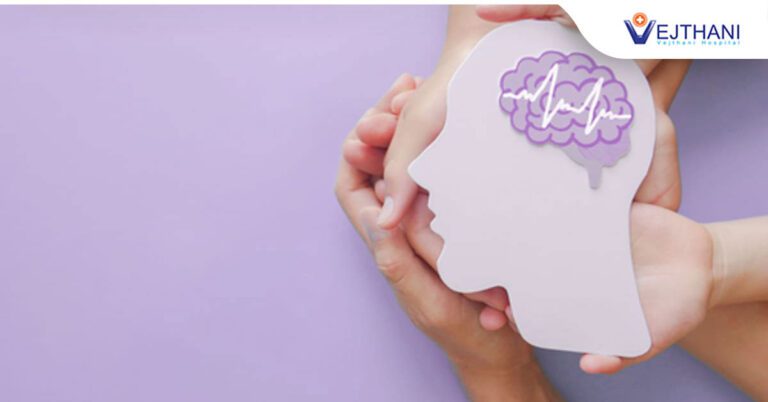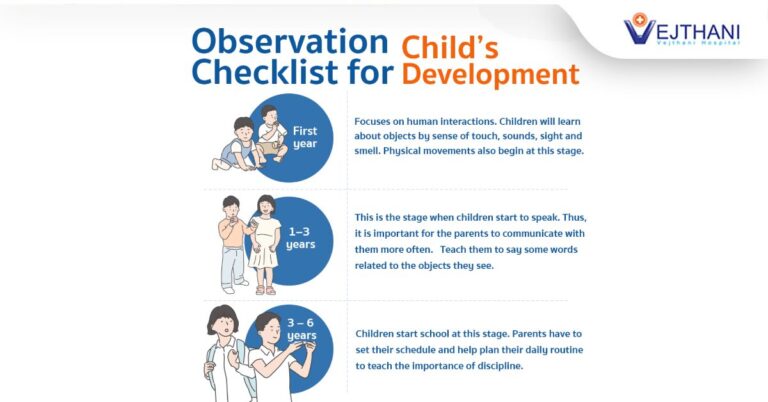“Children with disabilities are like butterflies with a broken wing. They are just as beautiful as all others but they need help to spread their wings.”
Every parent is looking forward to have a healthy and lovely child but sometimes some genetic disorders strike these precious angels, who needs more attention and these children are therefore referred to as “special children”.
Genes are the building blocks of heredity. They are passed from parent to child. They hold DNA, the instructions for making proteins. Proteins do most of the work in cells. They move molecules from one place to another, build structures, break down toxins, and do many other maintenance jobs. Sometimes there is a mutation, a change in a gene or genes. The mutation changes the gene’s instructions for making a protein, so the protein does not work properly or is missing entirely. This can cause a medical condition called a genetic disorder. You can inherit a gene mutation from one or both parents. A mutation can also happen during a lifetime.
Most treatment strategies for genetic disorders do not alter the underlying genetic mutation; however, a few disorders have been treated with gene therapy. This experimental technique involves changing a person’s genes to prevent or treat a disease. Gene therapy, along with many other treatment and management approaches for genetic conditions, are under study in clinical trials. At Vejthani Hospital Super Kids Center, a supportive treatment is applied in order to assist not only the child with genetic disorder but as well as the parents who are holistically challenged with their angel’s condition. Over all there is really no cure to genetic mutations, but our genetic consultant will support the parents in managing the signs and symptoms of the disease and delay its progress.
The following are examples of Genetic Disorders which will be discussed further below:
- Chromosomal Problems
- Cystic Fibrosis
- Down Syndrome
- G6PD Deficiency
- Hereditary Multiple Exostoses
- Infantile Osteoporosis
- Muscular Dystrophy
- Neurofibromatosis Type 1 (NF1)
- Phenylketonuria (PKU)
- Thalassemia
CHROMOSOMAL ABNORMALITIES
Chromosomal abnormalities are common causes of birth defects that can affect the brain and other parts of the body. The normal fertilized egg cell contains 23 chromosomes from the mother and 23 from the father. Thus, there are normally 23 pairs of chromosomes in the fertilized egg. These include two sex chromosomes: XX for girls and XY for boys. Some chromosomal abnormalities occur when there is an extra chromosome. Here are a few examples of chromosomal abnormalities that can affect the functioning of the brain.
Trisomies
The term trisomy means that there are three chromosomes, rather than the usual pair of chromosomes.
Trisomy 21: Down syndrome
Trisomy 21 is when there is an extra copy of chromosome 21. This causes a condition called Down syndrome. We can now estimate a mother’s risk during pregnancy of having a child with Down syndrome, with the use of blood tests and ultrasound findings early in pregnancy. The risk of having a baby with Down syndrome increases with the mother’s age. Because of this, women over age 35 are offered special tests during pregnancy such as amniocentesis to check the baby’s chromosomes.Features include:
- Mental retardation
- Slow growth
- Abnormalities of the face or skull(upward slanting eyes and flattened face)
- Heart conditions
- Developmental delay
- Limited cognitive abilities
- Reduced muscle tone leading to floppiness (hypotonia)
- A small mouth with a protruding tongue
- A flat back of the head
- A below average weight and length at birth
Babies born with Down syndrome can learn basic skills like sitting, walking, and talking, but at a delayed pace compared with other children. Physical therapy can help strengthen the muscles so that these babies can learn basic skills more easily. Because Down syndrome is associated with chronic health problems such as heart conditions, children with this disease need to receive regular medical care. They should also receive regular vision and hearing tests, thyroid evaluations, and immunizations for common diseases.
Trisomy 18
Trisomy 18, also called Edwards syndrome, have severe developmental delay as well as severe birth defects and health problems involving nearly every organ system in the body. Features include:
- Low birth weight
- Weak cry and startle to sound
- Have problems feeding and fail to thrive
- Small head size with prominent back of the head
- Low set ears and opening of the eyes
- Small nose and mouth
- Short breastbone
- Heart defects
- Clenched fist from birth and extending the fingers fully is difficult
- Bent elbow and knee joint position
- Club feet
- May have cleft lip and palate, eye problems, and hearing loss
- Some develop seizure, kidney problem and scoliosis
Feeding difficulties, heart problems and an increased susceptibility to infection are factors which contribute to the death of these children.
Trisomy 13
Trisomy 13, also called Patau syndrome have many abnormalities, involving nearly every organ system in the body, as well as developmental delay. Features include:
- Small head and sloping forehead
- Usually large nose
- Low set ears and unusual in shape
- Eye defects
- Cleft lip and palate as well as heart defects are very common
- Many babies have small areas of missing skin on the scalp which resemble ulcers
- Brains have structural problem
- Have extra fingers and toes
- Some present with a sac attached to the abdomen in the area of the umbilical cord
- Girls may have an abnormally shaped uterus
- In boys, the testes sometimes fail to descend into the scrotum
Klinefelter syndrome
Babies with Klinefelter syndrome have one or two extra sex chromosome(s). These babies are always boys and, instead of having an XY chromosome pair, they have XXY or XXXY as their sex chromosomes. Usually boys with Klinefelter syndrome are not diagnosed until puberty. The features of this condition include infertility, shrinkage of the testicles, and development of breasts. Mental retardation is not usually associated with Klinefelter syndrome, although it does sometimes occur.
Treatment of Klinefelter syndrome does not begin until the child is older. Around 11 or 12 years of age, the child’s testosterone levels will be measured. If the levels are low, he will be given testosterone injections on a regular basis. Testosterone can also be given through a skin patch or gel. Testosterone injections help to increase body hair on the face, underarms, and genitals, increase muscle development and sex drive, and shrink enlarged breasts.
If the child has learning difficulties or behaviour problems, educational support and counselling will be provided as needed.
XYY syndrome
XYY syndrome, also known as 47 XYY syndrome, XYY Karyotype, or Jacob’s syndrome, is a genetic disorder that occurs in about one in every 1,000 newborn boys. It often results from a random event while sperm cells are forming. Boys with XYY syndrome have three sex chromosomes instead of two. This is called “trisomy of sex chromosomes”.
Despite this extra chromosome, most boys can expect to lead a healthy and normal life. It is common for XYY syndrome to go undetected because symptoms are usually non-existent or very mild.
Turner syndrome
Babies with Turner syndrome, always girls, lack one of their X chromosomes, and therefore, only have 45 chromosomes (XO). The features of this condition include the absence of functioning ovaries, short stature, a webbed neck, skeletal deformities, and a broad chest with widely spaced nipples.
Because most girls with Turner syndrome lose their ovarian function in early childhood, they do not enter puberty at the normal age. Generally, if a girl with Turner syndrome has not had her first menstrual period by the age of 15 years, she will be given estrogen to induce breast development and other features of puberty. Girls with Turner syndrome are infertile. These girls need to remain on estrogen to maintain their sexual development and protect their bones from osteoporosis, until about age 50, which is the normal age of menopause.
Triple X syndrome
Babies with triple X syndrome, always girls, have three X chromosomes instead of the usual two. Some girls with this condition have no symptoms. Others may have learning disabilities, problems with speech or language, or mental retardation. Other features may include tall stature, a small head, problems with motor skills, and infertility. There is no cure for triple X syndrome. Treatment consists of managing the signs and symptoms of the disorder whenever possible.
CYSTIC FIBROSIS
Cystic fibrosis or CF is a disease that mainly affects the lungs and digestive system (or digestive tract). Although CF can be treated and CF patients can usually lead fairly normal lives, there is no cure for CF.
Signs and symptoms of CF include:
- Trouble breathing
- Cough that produces thick mucus
- Difficulty gaining weight
- Bowel movements that are bulky, frequent and foul-smelling
- Skin that tastes salty
- Repeated lung infections
- Delayed passage of meconium or meconium ileus (a blockage in the small intestine by the newborn’s feces)
There is no cure for CF. With appropriate treatment and regular follow-up, most children with CF can live fairly normal lives up to at least their 40’s. CF treatment is tailored to a child’s needs. It also depends upon the stage of the disease and which organs are affected.
Children with CF are encouraged to play games and sports. Ask your child’s doctor how much activity they can do. Sports such as running and simming are often helpful because they help clear the lungs of mucus.
Children with CF lose a lot of salt during exercise and hot weather, more than people without CF do. It is important to make sure your child replaces fluids and salt by drinking enough and eating enough salt.
G6PD DEFICIENCY
G6PD deficiency is an inherited condition in which the body doesn’t have enough of the enzyme glucose-6-phosphate dehydrogenase, or G6PD, which helps red blood cells (RBCs) function normally. This deficiency can cause hemolytic anemia, usually after exposure to certain medications, foods, or even infections.
Most children with G6PD deficiency don’t have any symptoms, while others develop symptoms of anemia only after RBCs have been destroyed, a condition called hemolysis. In these cases, the symptoms disappear once the cause, or trigger, is removed. In rare cases, G6PD deficiency leads to chronic anemia. With the right precautions, a child with G6PD deficiency can lead a healthy and active life.
HEREDITARY MULTIPLE EXOSTOSES (HME)
Hereditary Multiple Exostoses is a genetic bone disorder in which benign, cartilage-capped tumors (Exostoses or Osteochondromas) grow from the growth plate of long bones or from the surface of flat bones throughout the body. For some patients, Exostoses can cause numerous problems including: compression of peripheral nerves or blood vessels; irritation of tendons and muscles resulting in pain and loss of motion; skeletal deformity; short stature; limb length discrepancy; chronic pain and fatigue; mobility issues; early onset arthritis, and an increased risk of developing Chondrosarcoma. MHE patients have a 50% chance of passing the disorder on to their children.
INFANTILE OSTEOPOROSIS
Infantile osteopetrosis is a genetic condition that may result in:
- Fractures
- Short stature (height)
- Recurrent infections
- Hearing loss
- Vision problems
Other names you may hear for this condition are early onset osteopetrosis and malignant infantile osteopetrosis. This condition is quite rare and is believed to affect about 1 in 200,000 people.
MUSCULAR DYSTROPHY
Muscular dystrophy (MD) is a genetic disorder that gradually weakens the body’s muscles. It’s caused by incorrect or missing genetic information that prevents the body from making the proteins needed to build and maintain healthy muscles. A child who is diagnosed with MD gradually loses the ability to do things like walk, sit upright, breathe easily, and move the arms and hands. This increasing weakness can lead to other health problems.
There is no cure for MD, but researchers are quickly learning more about how to prevent and treat it. Doctors are also working on improving muscle and joint function and slowing muscle deterioration so that those with MD can live as actively and independently as possible.
NEUROFIBROMATOSIS TYPE 1 (NF1)
Neurofibromatosis type 1 (NF1) is a multisystem genetic disorder that is characterized by cutaneous findings, most notably café-au-lait spots and axillary freckling by skeletal dysplasias, and by the growth of both benign and malignant nervous system tumors, most notably benign neurofibromas.
Signs and symptoms of NF1 can vary widely from patient to patient. The earliest clinical finding usually seen in children with NF1 is multiple café-au-lait spots. These may be present at birth or may appear over time, frequently increasing in size and number throughout childhood.
Axillary or inguinal freckles are rarely present at birth, but appear during childhood through adolescence. Subcutaneous or cutaneous neurofibromas are seen rarely in young children but appear over time in older children, adolescents, and adults.
Other signs and symptoms may include the following:
- High blood pressure
- Bone abnormalities
- Optic nerve tumors
- Lisch nodules
- Learning disabilities; Attention deficit hyperactivity disorder; Autism spectrum disorder
- Larger than average head size
- Short stature
PHENYLKETONURIA (PKU)
PKU (phenylketonuria) is a genetically determined metabolic disorder that is highly treatable with diet and supplements. It is an inherited disease in which the body cannot metabolize an amino acid called phenylalanine. Normally phenylalanine is metabolized and converted into tyrosine, another amino acid, but if it stays as phenylalanine, there will be too much of it, and high levels of phenylalanine are harmful to the brain. Following the prescribed diet for PKU is a lifelong endeavor that requires a lot of support from family and your health care provider. If your child is able to strictly follow the diet and supplement regimen, he should be able to live a full, active life.
THALASSEMIA
Thalassemia is a blood disorder passed down through families (inherited) in which the body makes an abnormal form of hemoglobin. Hemoglobin is the protein in red blood cells that carries oxygen. The disorder results in large numbers of red blood cells being destroyed, which leads to anemia. Hemoglobin is made of two proteins: Alpha globin and beta globin. Thalassemia occurs when there is a defect in a gene that helps control production of one of these proteins.
The most severe form of alpha thalassemia major causes stillbirth (death of the unborn baby during birth or the late stages of pregnancy). Children born with thalessemia major (Cooley’s anemia) are normal at birth, but develop severe anemia during the first year of life.
Vejthani Hospital Super Kids Center provides a complete range of service for child’s health. The Pediatricians and Pediatric sub-specialists are fully prepared to meet the preventive, diagnostic and treatment needs of children. The children Development Clinic examines and evaluates child’s development and provides consultation on children’s developmental disorder.
For inquiries and appointments you can visit Vejthani Hospital Super Kids Center located at second floor or contact us through: email [email protected]
Tel +66 (0) 2734-0000 ext 3310-2/ 3319
Fax +66 (0) 2734-0375.
Service hours starts 8:00 am up to 8:00 pm from Monday to Sunday.
- Readers Rating
- Rated 5 stars
5 / 5 ( Reviewers) - Spectacular
- Your Rating


















